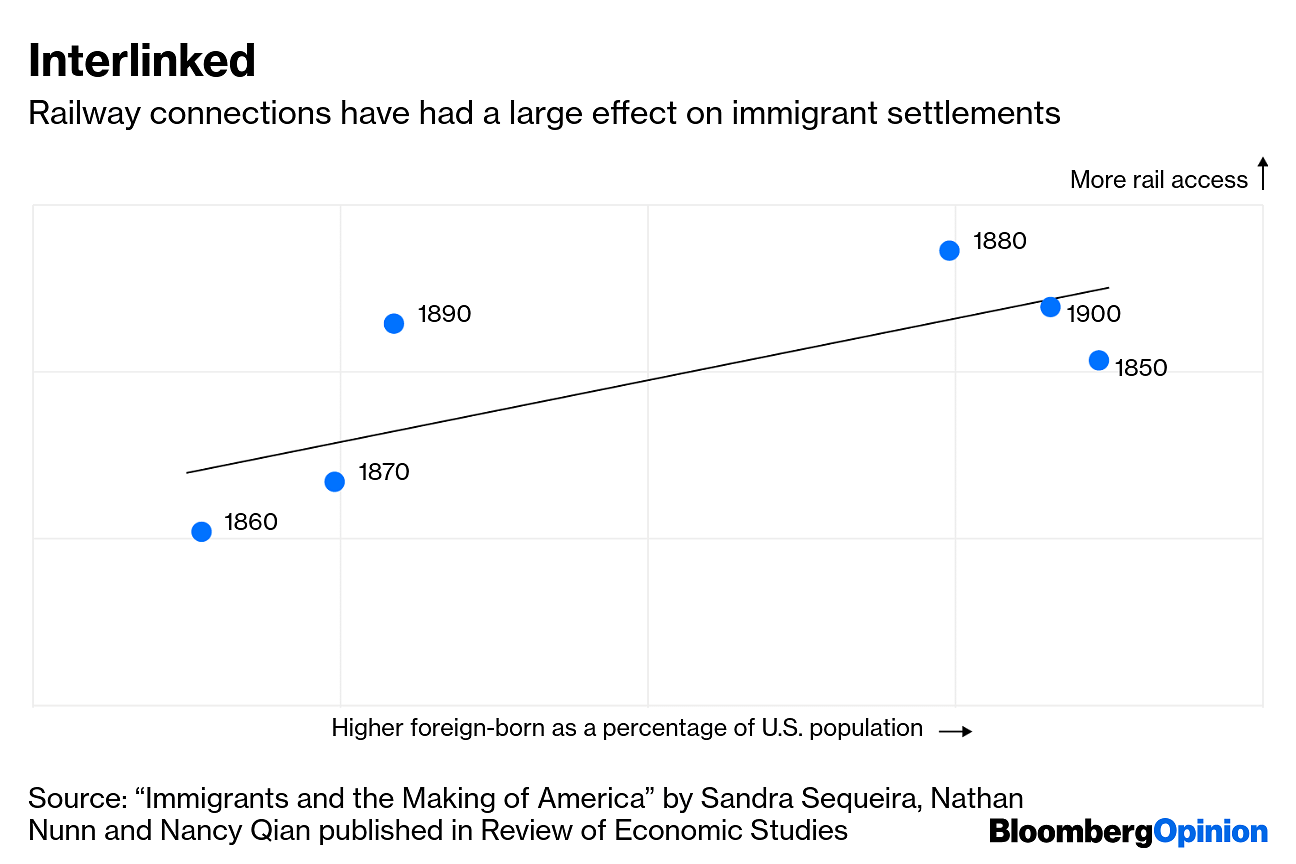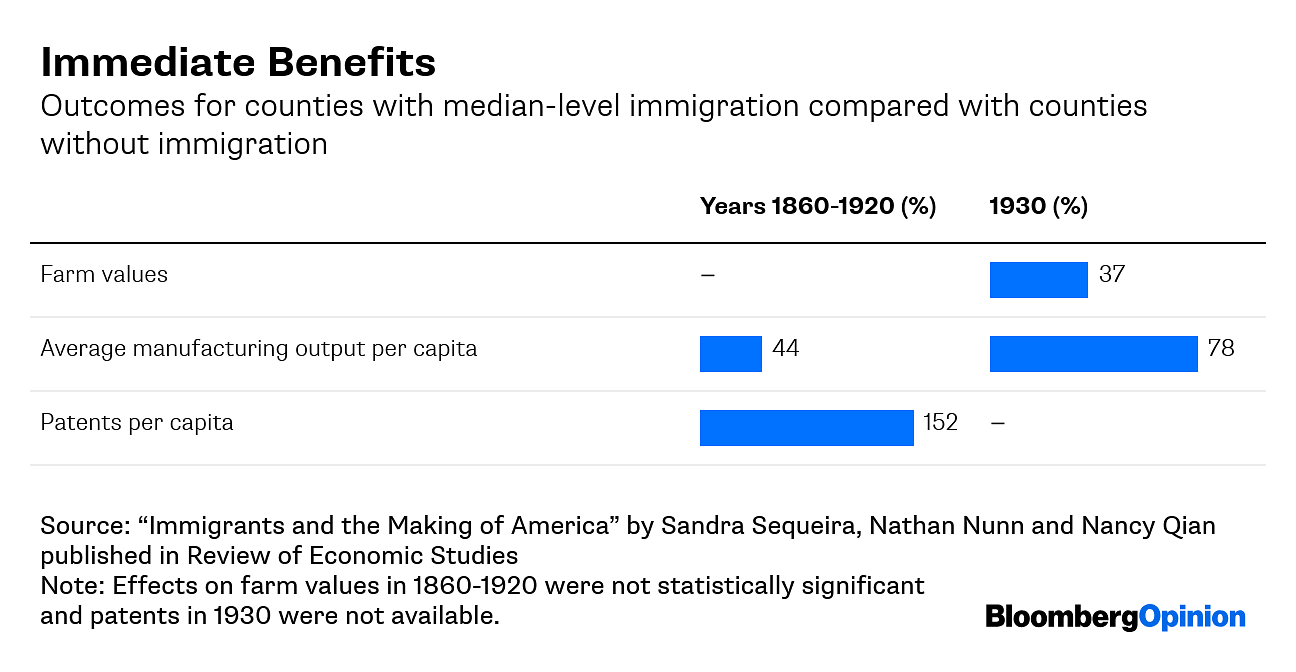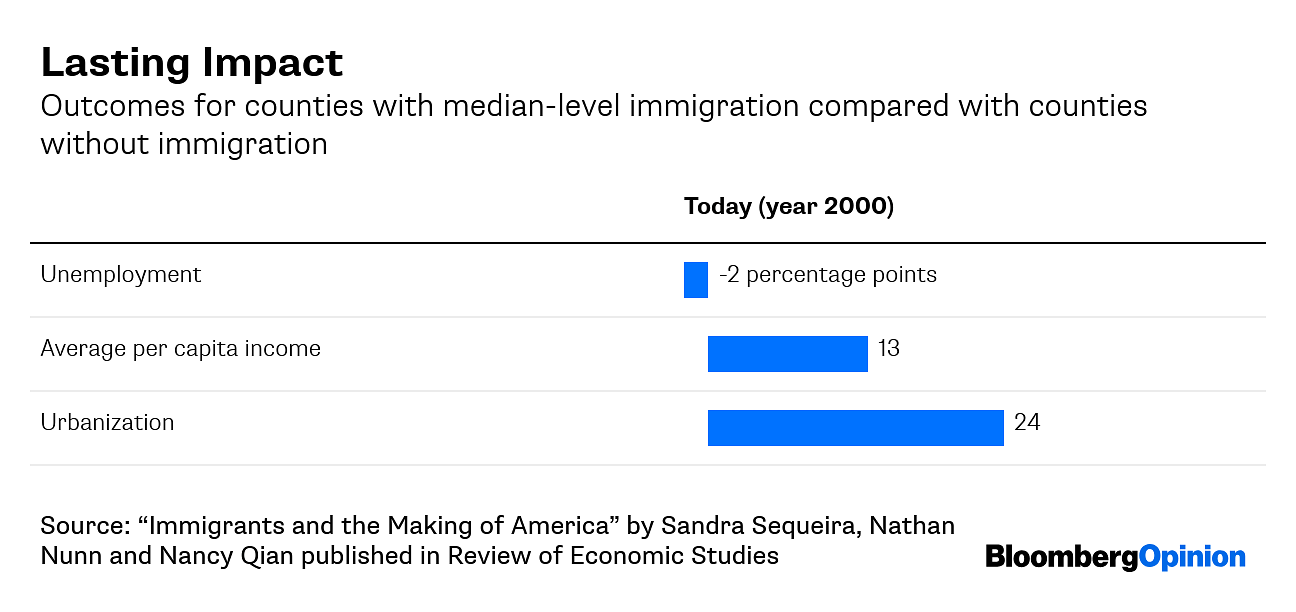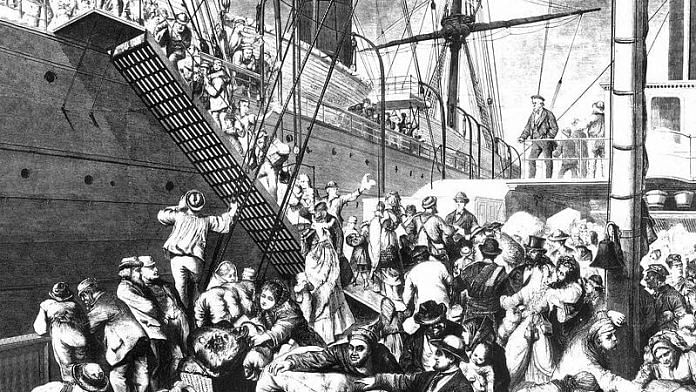When President Donald Trump said last week that the U.S. was “full,” he was reprising one of the dominant themes of his presidency: Immigration is harmful. The facts suggest otherwise. Not only do many studies show that immigrants are a net positive for the economy, their contribution amplifies with subsequent generations.
That’s the message of new research that looks at the lingering effects of the first great wave of newcomers to the U.S. between 1850 and 1920. These immigrants came with limited education and skills. Yet it seems their arrival continues to pay dividends a century or more later.
The economists who conducted the study crafted a rigorous analysis by demonstrating an exceedingly strong statistical relationship between two variables that defined communities in the U.S.: the intensity of railroad connections and the inflow of immigrants.

Put differently, they showed that communities with higher levels of railroad access had higher levels of immigration. This enabled the authors to construct a model that predicted the number of immigrants per county – without having to accomplish the impossible task of checking the Census returns and actually counting every single inhabitant.
Most of these immigrants had neither education nor skills. They included impoverished Irish fleeing famine; an eclectic assortment of Germans; and many people from Eastern and Southern Europe. Aside from their countries of origins, they were not so different from today’s asylum-seekers.
After quantifying the inflow of immigrants into counties across the country, the authors evaluated a range of short and medium-term measures of economic vitality. They found that places that welcomed immigrants recorded more industrialization, more innovation (as measured by patenting rates), higher agricultural productivity and greater economic growth.

Moreover, that growth did not come at the expense of neighboring counties. Rather, counties with high levels of immigration simply did better than those without.
But the really interesting results concern the present. Armed with geographical data on historical immigration, the authors went to the same counties today and asked: How did the arrival of immigrants a century or more ago affect contemporary levels of economic dynamism, crime and other measures of economic and social health?
They conclude: “Historical immigration resulted in significantly higher incomes, less poverty, less unemployment, more urbanization, and higher educational attainment today.”
To understand these effects, imagine an average county that welcomed no immigrants in this critical period between 1850 and 1920. Then compare it with an average county right in the middle – the 50th percentile – of immigrants (meaning a county that was right in the middle of the extremes of no immigration and the maximum number of immigrants).

The authors found that today the county that welcomed immigrants would have 2 percent fewer people below the poverty line than the county with no historical immigration. It would also have an unemployment rate 2 percentage points lower and per-capita income that is 13 percent higher.
On the social level, the authors found that communities with higher levels of historical immigration had slightly higher voter turnout rates, slightly higher numbers of nonprofits and associations that are markers for healthy civic life; and comparable levels of crime. None of the evidence suggested that immigration had a negative effect on any of these variables.
These long-term positive effects cannot be attributed to the fact that these immigrants were somehow “better” than today’s immigrants. Most lacked skills; many were illiterate; few had any formal education. Despite this, their children quickly outpaced native-born Americans, and this shift has apparently persisted to the present.
We already know that communities who currently welcome immigrants have lower rates of crime and higher rates of economic activity. But what we didn’t know until now is the degree to which this immigration in investment will likely pay dividends for the U.S. well into the 22nd century.
Also read: There’s a way to make immigration great again, writes Raghuram Rajan







Immigration is one major reason the US economy is growing faster and is more dynamic / innovative than the EU’s or Japan’s.